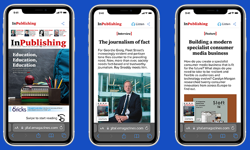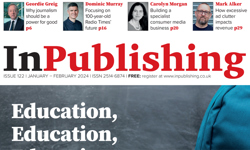In 2006, in these very pages, I predicted the large-scale demise of the controlled circulation title. Now, that may not have been especially prescient – it might even have been obvious – but whatever, it looks like it might have been right.
Controlled circulation magazines have been especially badly hit by the recession. Since they have no subscription revenues, they are dependent mainly on advertising for their profits. Some are lucky enough to have conferences or other events, and the luckiest have a split of revenues across recruitment, display and classified advertising as well as online and events.
The least fortunate at the moment are those with just recruitment ad revenue. There has been a collapse in B2B recruitment – some titles are 95% down year-on-year. These magazines are under real pressure, and not surprisingly are fairly actively looking at different ways of paying for their staff.
One of the first places such titles look for money is the circulation. That’s a reasonable place to look. They’re sending out a free service which they think people value – but do they? For some titles, it’s a win or bust moment, when they cut the free copies and ask for money and then sit hoping some of the subscribers will send cash. Do the readers value the title enough to pay for it?
Some will succeed, and some will fail – and the reasons are simple. To convert from free to paid you need to satisfy three conditions:
1. Quality
If your magazine is one of those with a very low staff-to-page ratio, prints mainly press releases, and readily allows advertisers to get what they want in the editorial, then you might want to rethink the idea of charging.
When you visit your readers’ offices, are your magazines piled up unread in the hallway? Basically, if you’re not good enough to be paid for, you won’t be.
Many local freesheet newspapers would fall into this category – they’re really just teasers for the local paid-for, with small amounts of low-quality editorial and a decreasing amount of classified advertising. Who’s going to pay for that?
Product books have the same problem, especially now product information is so readily available on the internet. Given they just publish whatever press releases they get, there’s not likely to be much trust from the readers, and no willingness to pay.
Come on – you know if you’re ‘quality’ or not, really. If you folded tomorrow, would people still be sad in a year?
2. Competition
If you’re in a market where there is a lot of competition, some of it still free to receive, then it’s going to be difficult to get anyone to pay for your magazine unless it’s twenty times better. And if it’s twenty times better, why don’t you charge for it already?
Airline Business, a magazine owned by RBI which successfully converted from free to paid a few years ago, was in a market of one magazine at the time, so the readers had no alternative – if they still wanted the information they got from the magazine, they had to pay. And they did want it - Airline Business is still publishing.
If your readers have ready alternatives – another controlled circulation magazine, a widely read paid-for competitor (particularly one with a high pass-on rate), or free internet services, then you probably won’t be as lucky. Building Design, which has recently begun the free-to-paid path, will find it tough in a market where there are thirty other sources in print alone, most already sitting in the architecture practice library and readily accessible to the target audience.
3. Patience
It won’t happen overnight. As you’ll see, reading on, it’s not an overnight process. Retail Week successfully converted to paid in the nineties, when it took three years to get to 50% paid-for. You’ll need some patience, and above all you’ll need some resource. There’s work involved.
If you’ve read this far, you’ve passed the first three tests, and are ready to hear how you go forward into the great subscription future.
The first step is to make the decision. Assuming you’ve already done that, or are at least thinking about it, the next thing is to get the team’s buy-in. My former colleague, Ben Wood, who led the Retail Week conversion tells of how the editor at the time was dead-set against, but won round to the extent that, three months later, he was being interviewed by Media Week and claiming it was his idea. Whatever, you’re unlikely to succeed without the whole team pulling in the same direction.
Then you need to pick a price – hard stuff this – what value would your readers put on your title? Two important things – competition sets a benchmark, and your costs don’t matter to your readers. If you have a paid-for competitor, then their price is one you should be able to achieve if you satisfy condition one above. And your costs – particularly print, paper and distribution – are an irrelevance to your readers; what matters is the value they might place on it. To find that out, you’ll have to ask them.
The conversion programme
Then you have to actually do it. The main principle of this free-to-paid conversion mystique is actually really quite simple. Ready? Stop sending free copies out and ask people to pay to get their supply reinstated. Er... yes, that’s it. Obviously there’s plenty of detail to add, but basically that’s the gig.
You might not want to do it all in one go – if you have any advertisers left, they might be a bit upset if the reach drops from “90% of the sector” to nothing from one issue to the next. Best practice says, do it in chunks. Carve a significant lump off your circulation, say 20%, and try to get them to pay first. The best bunch to choose are those with demographics least attractive to those of your advertisers still spending – which may not be the same bunch as it was a year ago, particularly if your recruitment revenues have fallen off a cliff.
Then tell them their copies will stop, stop the copies, and tell them the copies have stopped, each time giving them a chance to give you money. It’s really the same as applying the principles of a typical paid-for renewal series.
Timings vary, as do the other tactics, and I won’t waste space by running through them here – InPublishing has published a number of excellent articles now available on their website that can help - Chris Gregory’s from 2005 is a great example. Read the pieces in the references box below, and practice what they preach.
Once you’ve got as many of the first chunk to pay as you can, move on to chunk two, and repeat – remembering they may need different messages to chunk one.
So really, the patented three-step programme for best practice free-to-paid conversion is:
1. Pick a chunk
2. Tell them they’re going to lose supply, cut them off, try to renew them a few times.
3. Pick another chunk and repeat.
Once you’re converted, then you need to watch out for some things. First of all, you’ll need to change your marketing – you’ll need a renewal series for a start. Don’t think you can sit back and wait a year before putting that in – read those articles in the references; you need a ‘renewal at birth’ effort, and an ‘early bird’. Not to mention the ‘subscriber get subscriber’ campaign you will want to run.
You’ll need to change your ad sell. You will no longer have unrivalled penetration, or enviable demographics, or assurance over who is seeing advertising. You’ll have smaller numbers, quality, seniority and pass-on rates. Sales teams generally deal with change with a puzzled expression and a host of objections – they’re going to need a complete retrain, and a new set of sales materials. In fact, you should really take your advertisers into your confidence on your plans, or they may not be your advertisers for very long.
And of course, you’ll get complaints – from your advertisers, and from your readers. Be ready; prepare all your staff with reasons for the change and answers to questions you expect to be common. Make sure the whole team is on-message, and the complaints will die away – hopefully before you do.
Web only option
There are a couple of alternatives to full conversion. If you can’t convert to paid, you can stay free, by switching to digital-only distribution. It’s a dream really – you can keep all the staff, but save all the print and distribution costs by switching to delivery by internet. Many controlled circulation titles are already using digital distribution to reduce cost and maintain reach. Some think that they might switch away from paper and become entirely digital.
But that may not be the panacea it seems. The Seattle Post Intelligencer, which, despite its name, is a historic and respected newspaper – or was at any rate – decided to go ‘web only’ in March of this year. Until it did, it was among the top 30 newspaper websites in the USA.
But once it ceased paper publication, the website, www.seattlepi.com, fell in popularity, losing 23% of unique users in March at a time when all other similar titles were growing by more than 10%, and its direct competitor, the Seattle Times, added 70%.
So, without a print edition to remind people to visit the website, traffic fell significantly. Funny that. This strategy also flies against the recently revealed plans from NewsCorp, DMGT and others who are all beginning to suggest they want to start levying charges for online content. So think twice. Or maybe three times.
A mixed bag
Another option is ‘mixed circulation’. This is used by the Birmingham Post and other newspapers like the Shrewsbury Chronicle. It’s a simple principle; people in the centre of the distribution area get it for free, and people in the outskirts / villages on the periphery have to pay. Euromoney has been known to operate in a similar manner.
Can you construct a model like this? Perhaps central London copies could be handed out for nothing, while rural copies cost more? It can actually match your distribution costs if you’re using low-cost hand delivery in urban areas, and high-cost Royal Mail elsewhere. Really it’s a different way of selecting chunks for conversion to paid, but it might allow you to retain a decent sized element of controlled circulation, with all the benefits that accrue from that for your advertising story.
So, conversion is a long, hard road, one you don’t necessarily need to take all the way along. So think about it carefully, and be prepared to work. Your publishing life is on the line.
References
The following articles can be found at the Knowledge Bank
1. Chris Gregory, “B2B renewals health check”
2. Andrew Majewski, “Renewal Marketing”
3. David Nutt, “Tactics to improve your billing and renewals pay-up”










